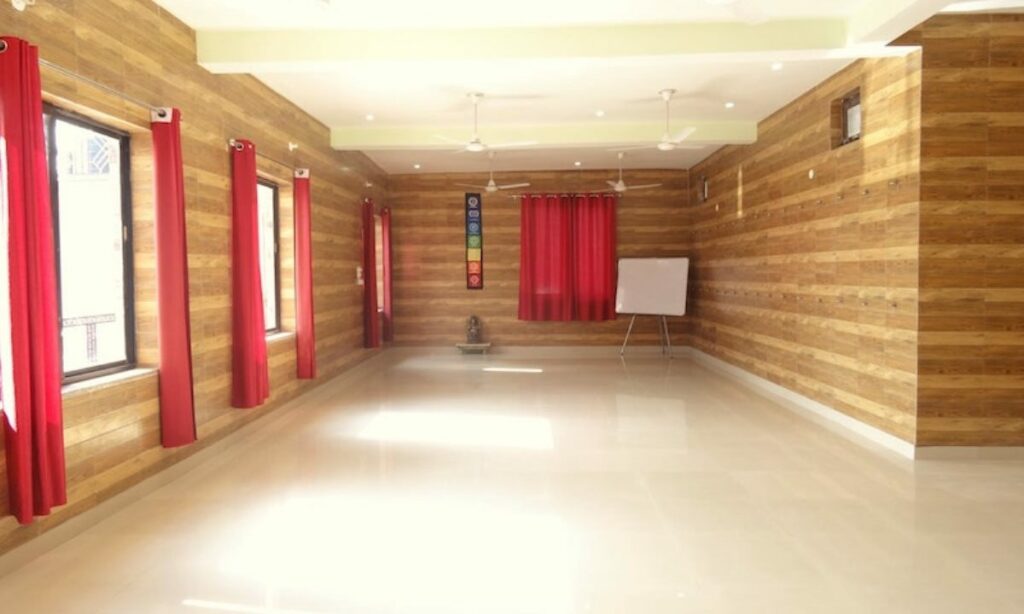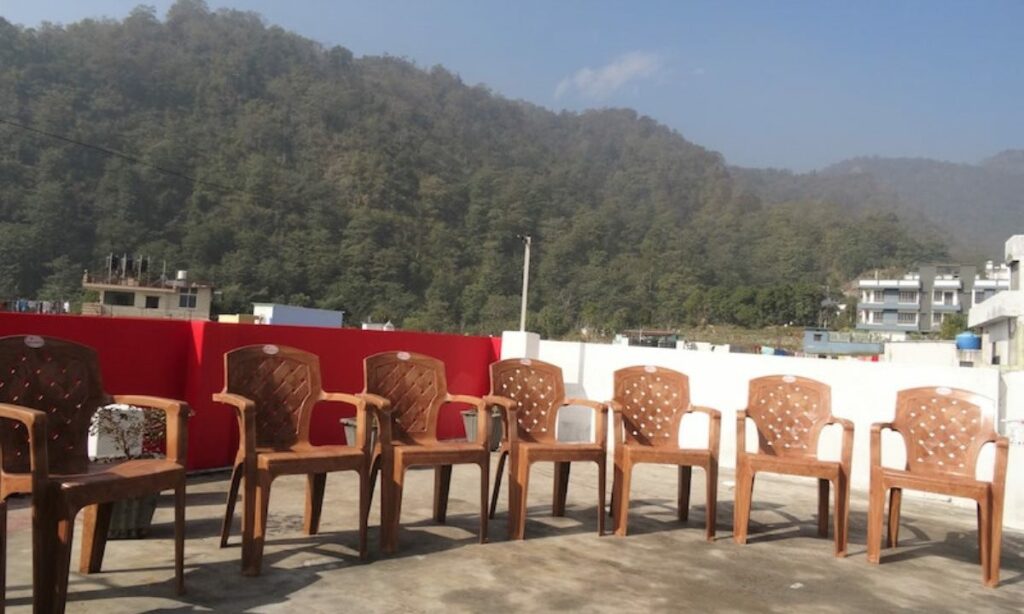Sthira Tandava
Our outer world is in continuous motion and along with it we dance round the clock. When we do sit still , how still is our mind?
- Date: 10TH JULY -16TH JULY 2022
- Fee: 30000 INR
- Language: English, Hindi
- Module: Residential with Meals
- Level: Beginner to Intermediate
- Certification: Yoga Alliance
- Style: SMALL BATCHES

Sthira Tandava - 07 Days Retreat In Rishikesh, India
Exploring The Stillness In Movement
Most of what we observe in life is constantly undergoing a process of change or movement including ourselves. Is there something in us that is unchanging and constant?
If you see a moving bus pass by, what do you notice? If you were to freeze its motion in form of a picture what do you notice?
When we sit in meditation, in the voluntary stillness of body their is a gentle but continuous movement of breath.
There is Movement in Stillness. But is there stillness in movement?
What Will You Find Here?
Sthira Tandava is a yoga retreat in the green mountains of Uttarakhand. The serene atmosphere away from the hubbub of city is an ideal setup for self enquiry and rejuvenation. The intention of this retreat is to bring into our awareness the stillness within the movement. Finding the ever exisiting divinity within oneself. An infinite pool of nectar you can dip and soak into to refresh yourself. Once we connect with this inner wisdom, we can choose to keep coming back to this source.
Sthira – The tranquil silence within
Tandava – Divine Movements innate to our body
In this retreat we bring to you yogic practices such as dynamic asanas in form of embodied movements that bring us home to the natural moving patterns of the human body. Static asana practice like Yin Yoga where we explore bodily sensations and our mind flow. Active meditation or movement based meditations.
Traditional breathing and meditation practices from Bihar school of Yoga. Talks on Advaita Vedanta to make self enquiry into your experiences. In the lap of mother nature we find our balance amongst lush green mountains, chirping birds and fresh breeze in close proximity to the holy River Ganga.
About The Location - Dirghayu Bhava Aashram
Dirghayu Bhava Aashram is located on top of a Mountain surrounded by green forests of Uttarakhand. It is reachable from Dehradun airport in 30 minutes. In monsoon the entire area is full of natural water streams and rivers. The Calm and Peaceful aura of this place opens your hearts and minds naturally to bring out the mindfulness required for a journey towards self awareness and healing.
The Ashram is close to local village community and believes in the simple, sustainable and holistic lifestyles of Pahari Villages.The food preparation is based on ancient Ayurvedic principles of cooking, use of clay or brass pots, different herbs, simple preparation, and is suitable for all 3 doshas. The meal served here is not only nutritionally dense is also prepared with positive energy and love. Food is the source of the flow of energy in our bodies and the food here supports the positive flow of energy in your body and mind.
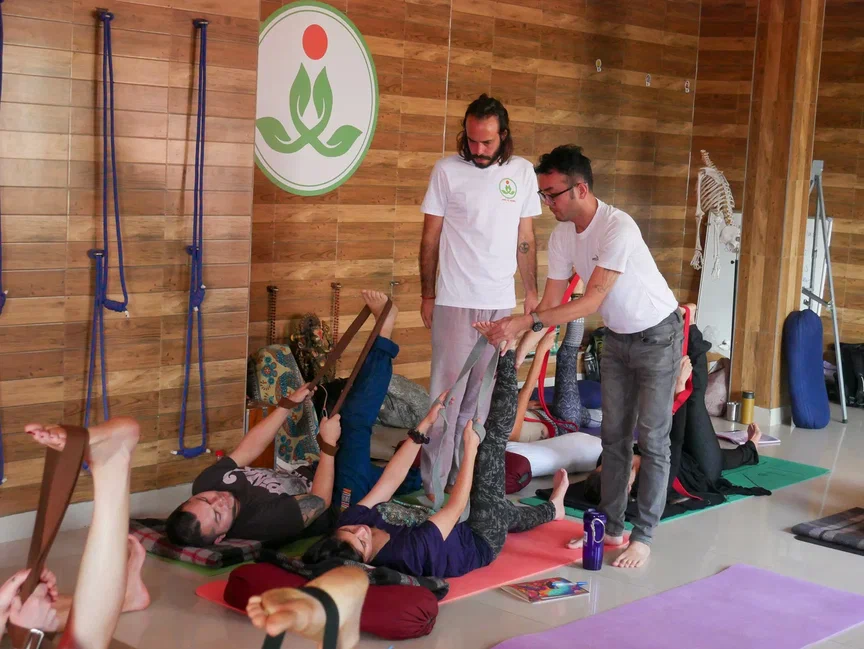
A Glimpse...

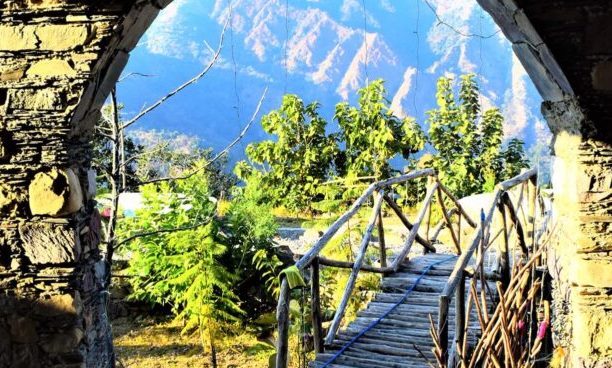
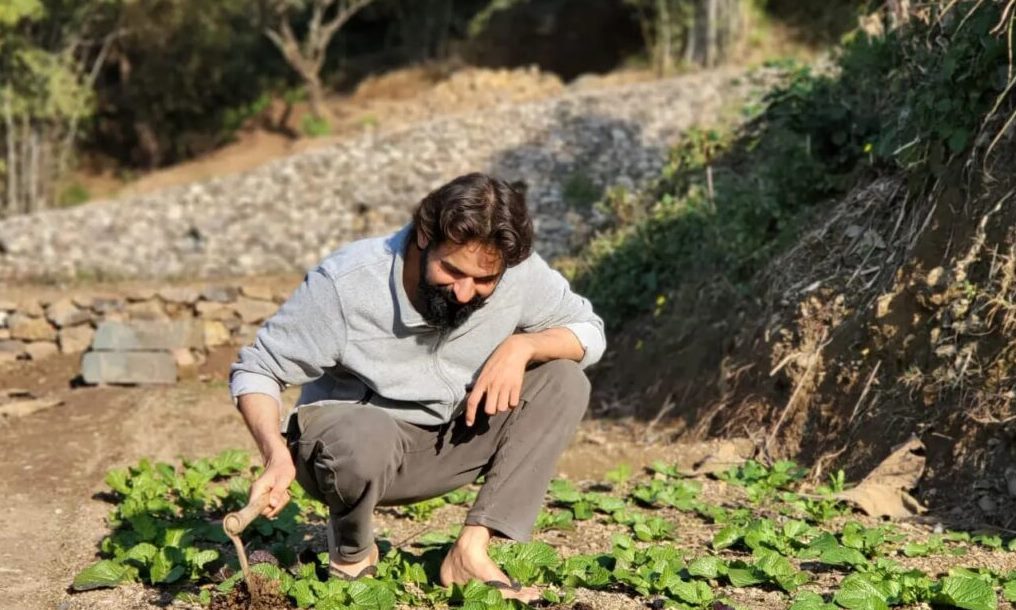
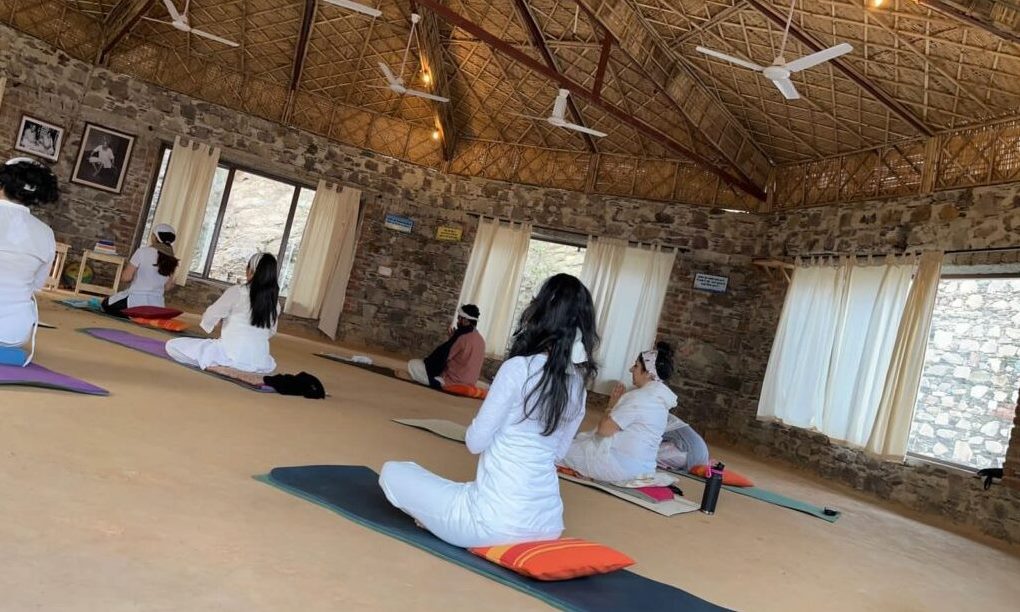

Sthira Tandava: 7 Day Retreat In Rishikesh
Course Date
| Date From | Date To | Booking |
|---|---|---|
| 10th July 2022 | 16th July 2022 | Book now |
7 Day Retreat In Rishikesh, India
Course Fee
| Accommodation Type | Price Per Person(*Early Bird Discount Available) |
|---|---|
| Shared Twin Room | 30,000 INR |
| Triple Share Room | 24,500 INR |
Course Fees Includes
- 6 nights / 7 days accommodation on a twin/triple sharing basis
- Healthy Ayurvedic Meals , Morning and evening tea
- Classes on Asana , Pranayama and Meditation practices guided by the coaches
- Excursions and Activities – Village Walk, Trek to Waterfall / Nearby Lake
- Retreat Goodie Bag
Doesn’t Includes
- Travel to venue and back
- Any personal expenses made at the property
What To Carry
- Yoga Mats
- Comfortable clothing for asana practice
- Clothing for Pranayama , Meditation and other activities
- Jackets/Hoodies appropriate for rainy weather
- Shoes to go on trek, Slippers
- Towel
- Umbrella
- Powerbank (May experience power cuts for 2-3 hours)
- Water Bottle
Note:
This location is away from city shops and facilities. Carry urgent requirements like medicines etc.

Sthira Tandava: 7 Day Retreat In Rishikesh
Course Curriculum
Embodied Movements with Parveen
Sthira Tandava Movements class with Parveen will focus on the dance of Shiva with the grammar of Yoga asanas infused in a vinyasa style. This class is designed to bring out elements of the dancing Shiva and its relationship with the physical, pranic and emotional flow of the human body. The class begins with a practice of centering, to invite the mind to permeate the body and breath. Followed by Natural body movements integrated with myofascial hydration to enhance fluidity and mindfulness while moving. We explore asanas in different planes of movements related to the Dancing Shiva pose. Recovery pattern to come back home to the Silence within. Overall participants will learn to find balance with their psychic, breath and mind.
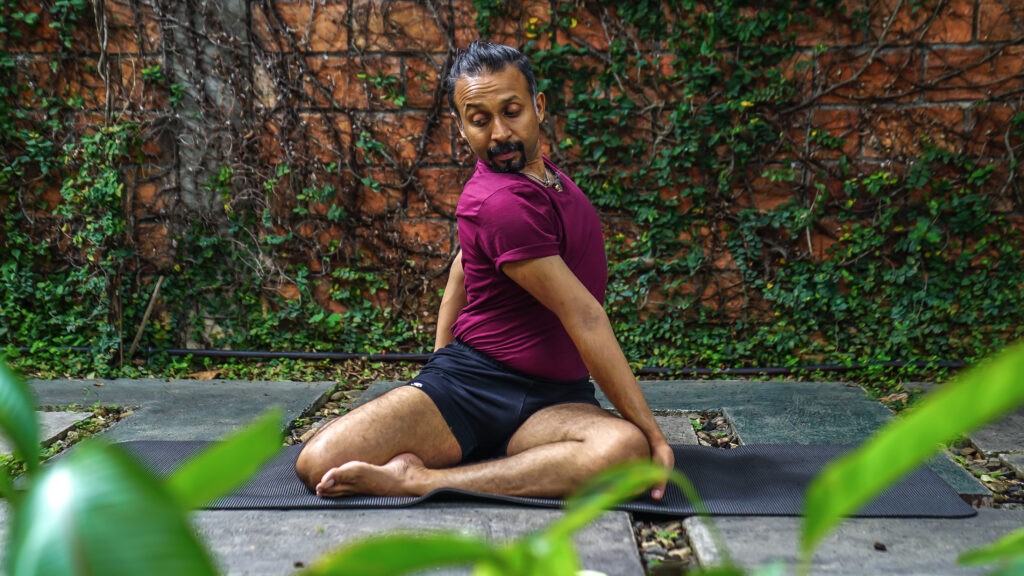
Dharana to Dhyana with Uttam
The yogic term for concentration is dharana, which means ‘to hold the mind at one point’. In the yogic tradition, dharana belongs to the internal stages of raja yoga which is the path of mental discipline. Dharana follows the stage of pratyahara in which the mind is withdrawn from the external sensory objects and internalized. After separating the mind from the senses, the mind can be directed to go into deeper states of mental awareness. As the mental awareness deepens, when there is a total absence of sensorial awareness, then dharana takes place. Dharana helps to cease the flow of thoughts and brings great relaxation. With this mental training, we become objectively aware of our surroundings and our interactions with it. We are able to control the distressing negative traits of our personality, the negative thoughts and emotions, the feelings of anger, anxiety, frustration, depression and so forth. Uttam will focus on practices like Yoga Nidra, Kaya Sthairyam, Ajapa Japa, Antar Mouna and Chidakash Dharana during this retreat.
Vedanta Philosophy with Parveen
Atmastakam , participants will learn to chant this hymn and its meaning and its relationship with our pursuit to Happiness . This chant contains one of the primary mantras of Shaivism, the Soham Shivoham mantra (“I am That, I am pure consciousness”) and is thought to promote a deeper understanding of one’s true nature, as well as a connection to the universal source represented by Shiva). The name of this mantra comes from the Sanskrit atma, meaning the inner Self; satka, meaning “sixfold”; and Shivoham, meaning “I am Shiva.” The Atmastakam Shivoham mantra is composed of six verses and is believed to have been written in the eighth or ninth century by Hindu philosopher Adi Shankara. It promotes the philosophy of non-dualism (the oneness of the inner individual Self with the Ultimate Reality). Also known as the Nirvanashatkam, the Chant of Shiva reflects this philosophy of non-dualism in its opening lines: “I am not the mind, the intellect, thought, ego or form of supreme being. I am not the ears, the skin, the nose or the eyes. I am not the sky, earth, light or wind. I am consciousness and bliss. I am Shiva, I am Shiva.”
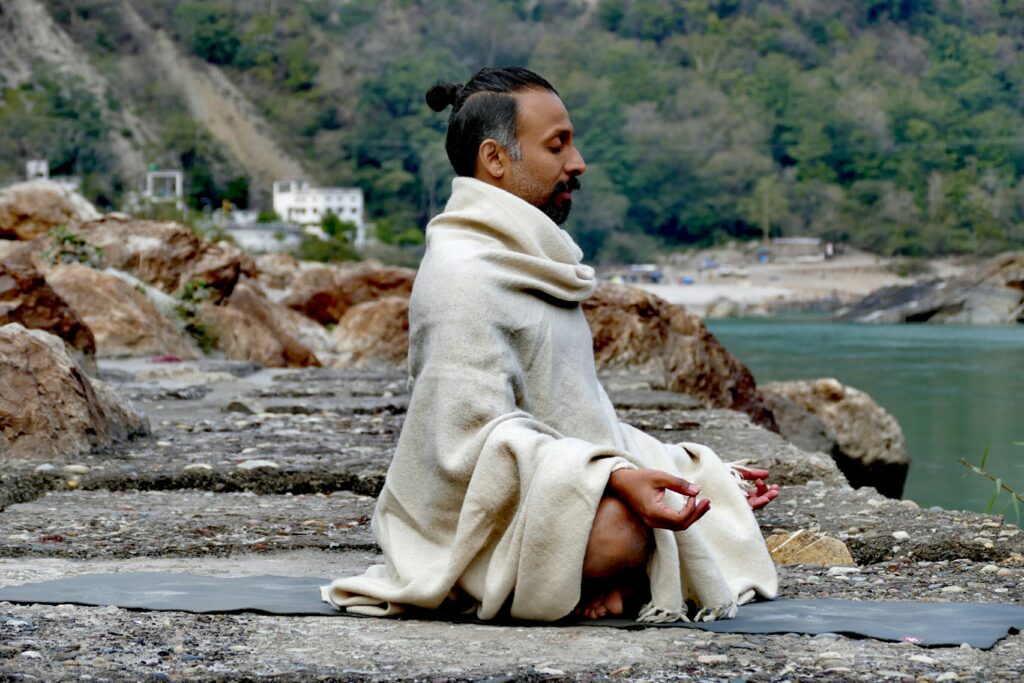
Yin Yoga with Ekta
Yin and Yang represent two opposing forces that may actually be interconnected in the real world. While Yang represents action oriented Masculine energy in Yin represents the Creative, Intuitive and Feminine side. Yang energy is needed to nourish our Yin interior, and it is the gentler Yin qualities within us that balance our Yang intensities. In Yoga asana also we can see these complimentary polarities when we use the physical body – a tangible form to connect with our subtle body through breath and sensations. Ekta will guide you to visit this inner world of physical sensations, feelings and thoughts rising in the mental body in the Yin Yoga class. Yin Yoga is a quiet and stillness based practice where we hold floor based asanas for longer durations. The non movement and the time gives us an opportunity to go visit our bodies from within and understand the mind-body-emotion complex which continues to change. This practice helps us strengthen our ability to listen to the body and connect to the softer, invisible aspects of our nature.
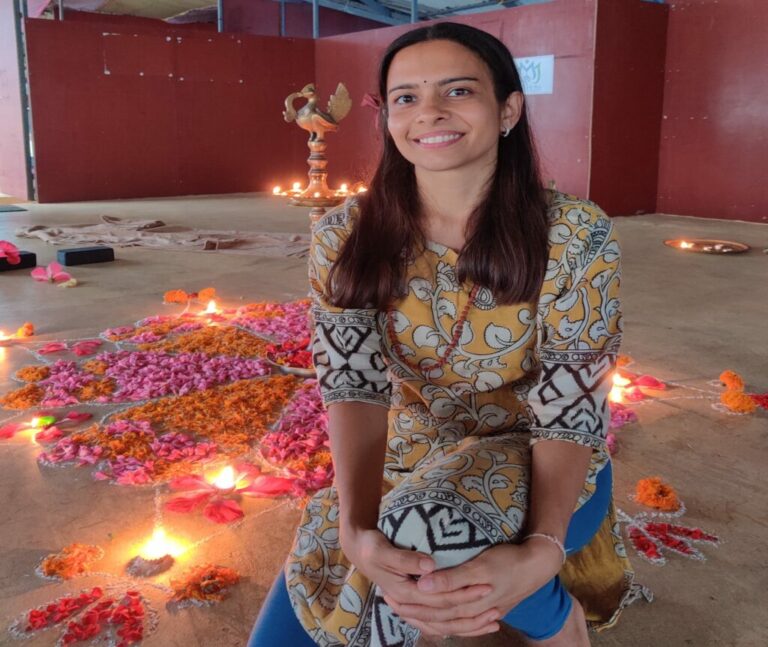
Active meditation with Kuldeep
Sthira Tandav active mediation class with Kuldeep will focus on the mind and its relationship with movements. We often desire a flexible yoga body but it is the mind that needs to be flexible. There are various sufi and yogic traditional practices which work on this aspect. Where we use the body to grow beyond the body. Videha , growing beyond the body. Meditation is a state of being which can’t be tried , it happens when the mind is still. Overall participants will work on mind and its conditionings while experiencing the union within and outside.
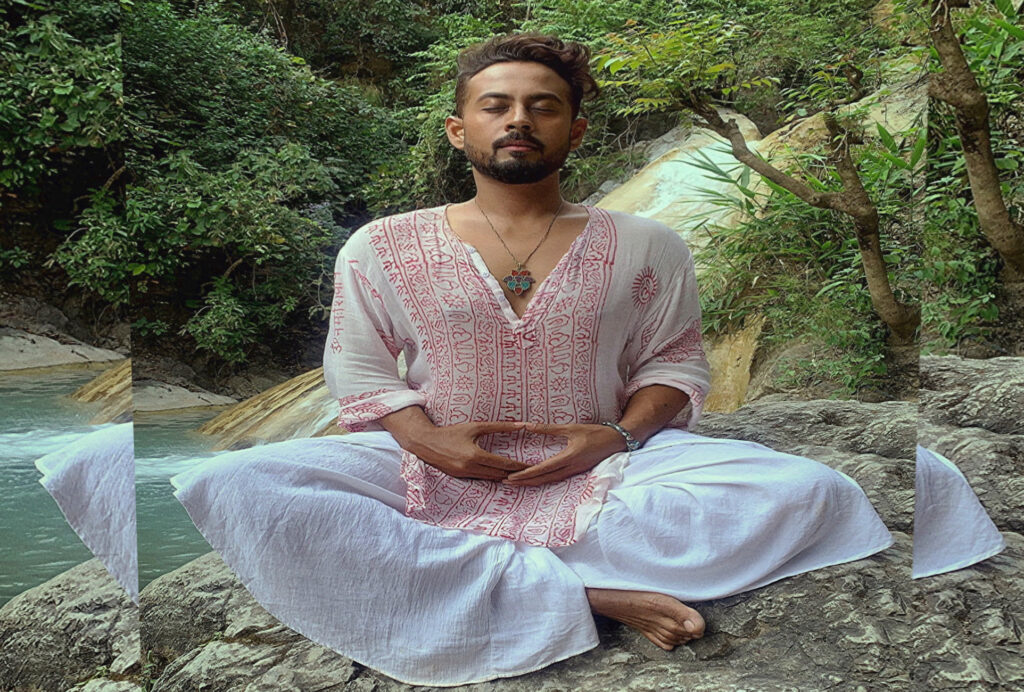
Journey with us!

200 Hours Yoga Teacher Training Components
Foundation
Thorough interactive discussions and practical sessions in group concept of incorporating personal Sadhana in Hatha Yoga classes will be shared.
- Understanding and discovering the centre of the movement in the human body that connects the lower body to the upper and the left to the right.
- Discovering the essential movement that is embodied in our human anatomy
- Pelvic movements, Lower body joint movements, Spinal movements, Shoulders joints movements, Arms movements, and Neck movements.
- Students will learn to explore the natural range of the human body in relation to daily life movements.
Groups of Asana
- You will cover 50 asanas along with integrated movements
- How to perform the asanas
- How to teach the asanas – the 3 stages of teaching pedagogy
- Counter indications
- How to use props in the asanas
Groups of Asanas
- Standing Balancing
- Standing Twist
- Standing Forward
- Standing Lateral
- Seated
- Inversion
- Spinal extensions
- Retorative
Prana means ‘vital energy’ or ‘life force’. It is the force that exists in all things, whether consciously or unconsciously. Breath control could be generally referred to as Pranayama. Indeed, it is more subtle than air or oxygen, yet is closely related to the air we breathe. Pranayama must not be mistaken for simple breathing exercises targeted at increasing oxygen levels in the lungs as it is much more than that; it is getting together your conscious and sub-conscious mind while you breathe.
Breathing is used in pranayama to control the inflow of prana through the nadis, or energy channels, of the pranamaya kosha, or energy body. Pranayama utilizes breathing to impact the inflow of prana in the nadis or energy channels of the pranamaya kosha or energy body. Despite the fact that this interpretation appears to be correct in light of the practices involved, it doesn’t convey the entire meaning of the term.
The word pranayama is based on two roots of yoga: Prana and Ayama. The words “Ayama” and “Yama” often get mixed. To clarify further, the word Yama refers to ‘control’ and is used to indicate various rules or codes of conduct whereas Ayama is defined as ‘expansion’. While understanding the concept of Pranayama we often mix the words ‘Yama’ and ‘Ayama’ with the word ‘prana’. However, the precise word is ‘Ayama’ which has far more association than the word ‘Yama’.
The combination of prana and Ayama makes Pranayama that means ‘expansion of the aspects of prana’.
The techniques of Pranayama focus on providing a method for activating and regulating the life force in order to go beyond one’s normal boundaries or limitations and achieve a higher state of vibratory energy.
Pranayama:-
Introduction of Pranayama,
Preparations for Pranayama,
Basic Pranayama,
Observing the Yogic Breathing – Prana Vikshana,
Abdominal diaphragmatic breathing,
Kapalbhati,
Bhastrika Pranayama,
Agnisara kriya,
Ujjayi Pranayama 1,2 & 3,
Nadi Shodhana Pranayama 1 & 2,
Brahmari Pranayama,
Sheetali,
Shetkari,
Bandhas,
Mula bandha,
Uddiyana bandha,
Jalandhara bandha,
Maha bandha,
Mudras,
Gyana mudra,
Chinmaya mudra,
Prana mudra,
Shambhavi mudra,
Shanmukhi mudra,
Hridaya mudra,
NASIKAGRA DRISHTI,
ASHVINI MUDRA,
How to teach teaching a Pranayama class
Shat kriya:-
The Shat Kriyas referred as the six cleansing procedures of the body; a science that is exceedingly explicit and systematic.
The aim of hatha yoga and, by extension of the Shatkarmas, is to achieve physical and mental purification and balance by achieving harmony between the two major pranic flows, ida and pingala.
The Shatkarmas are also used to balance the three doshas or humour in the body: Kapha- mucus; pitta-bile; and Vata-wind. An imbalance of the doshas, according to both Ayurveda and hatha yoga, causes sickness. These practices are also utilized prior to pranayama and other higher yoga practices to cleanse the body and promote safe and successful spiritual evolution.
This powerful balancing technique must not be followed or practiced from an undefined source like books, random videos, or even tutors. If we must follow the tradition, only those instructed by a guru may teach others. While practicing it is essential to be personally instructed as to how and when to perform them according to individual needs.
Practices:-
Jal neti,
Sutra neti,
Kunjal,
Laghoo sankhaprakshalana
Yoga Darshana The Yoga School of Hindu philosophy was systematised in the Yoga-sūtras written by the Sage Maharshi Patanjali. Yoga means ‘union’. Patanjali is the compiler of the Yoga-sūtras and certainly one of the most important Vedic teachers in history. However, many people mistakenly attribute Patanjali as the founder of Yoga philosophy. The teachings of Yoga Darshana have existed since the time of the ancient Vedas in various aggregates. In fact the Mahabharata declares that Hiraṇyagarbha is the original teacher of Yoga; Hiraṇyagarbha (The Golden Source) here is a reference to Lord Brahma, the creator in the Hindu Trinity, the first guru; who also represents the Vedas and the Cosmic Mind. In the Vedas, Hiranyagarbha is identified as the Universal Being, the Creative Source of the Universe and the Vedic Sun God whose chief disciple is Rishi Vasishta. Yoga Darshana of Patanjali is closely related to the Sankhya Darshana of Kapila. Its philosophy is developed directly as an extension of the existing Sankhya Darshana. However, Yoga Darshana does differ from Sankhya Darshana on a few important concepts. The most distinct feature is the introduction of the Isvara principle or the God principle making Yoga Darshana a theistic school while Sankhya Darshana is a non-theistic school. Isvara is a special Self (Vishesha Purusha) who is not smeared by afflictions, actions, their fruitions and the domains of their accumulated propensities; who is omniscient; who is the guru even of the very first teachers; who is signified by the mantra OM (AUM) – this is the God of Yoga Darshana. Isvara is the guide and support of the yogis on the spiritual path. It is for this reason, the Yoga Darshana is also called Sa-Isvara Sankhya (Sankhya with Isvara) while the older Sankhya Darshana is called Nir-Isvara Sankhya (Sankhya without Isvara). Yoga Darshana says that human suffering and transmigration is caused by ignorance (avidya) and as in Sankhya Darshana, this ignorance is removed through discriminative wisdom and self-awareness that leads to spiritual liberation called kaivalya. This wisdom constitutes the realisation of consciousness or Self (Purusha) as separate from the body-mind matter (Prakriti) and thus abiding in one’s true nature. Therefore Raja Martanda, also called Bhoja Vrtti, a gloss on the Yoga Sūtras explains Yoga as the process of separation (viyoga) of the Self (Purusha) from the material nature (Prakriti). The Sankhyan emphasis on knowledge for the attainment of liberation is combined in Yoga Darshana with techniques that can be practiced to harness the mind towards an inward personal exploration and experience. This distinguishes Yoga Darshana’s emphasis from that of Sankhya Darshana. Patanjali says that through systematic practice of certain techniques one can restrain the mental waves and reach a state of absorption in one’s own true Self called samadhi. Remaining in one’s true pure awareness, steady wisdom dawns that removes all attachment with mental modifications – the false identities of the ego and intellect
yogaś citta-vritti nirodhah tada draśtuh svarupe avasthanam ‘
Yoga is the restrain of the activities of the mental-waves. Then the seer establishes in its true nature’. – Yoga Sūtras, 1.2 – 1.3
Patanjali outlines the spiritual practices in a systematic methodology called Ashtanga yoga (the Eightfold Yoga path). Ashtanga yoga is the primary spiritual practice of Yoga Darshana. Although principles of practices related to Karma yoga, Bhakti yoga, and Japa yoga are mentioned in the Yoga-sūtras, they are incorporated as part of the Ashtanga yoga system. Ashtanga yoga is a spiritual discipline that focuses on mental training in the sublimation of thought fluctuations, developing concentration, and meditation.
Yoga Sutras of Sage Patanjali
Sadhana Pada Of Patanjali Yoga Sutras
अथ योगानुशासनम्॥१॥
atha yoga-anuśāsanam ॥1॥
Now Then Yoga Is Being Explained
योगश्चित्तवृत्तिनिरोधः॥२॥
yogaś-citta-vr̥tti-nirodhaḥ ॥2॥
Yoga Is The Suppression Of The Modifications Of The Mind
तदा द्रष्टुः स्वरूपेऽवस्थानम्॥३॥
tadā draṣṭuḥ svarūpe-‘vasthānam ॥3॥
Then the Seer is established in his own essential nature.
वृत्तिसारूप्यमितरत्र॥४॥
vr̥tti sārūpyam-itaratra ॥4॥
At Other Times The Seer Appears To Assume The Form Of The Modifications Of The Mind
वृत्तयः पञ्चतय्यः क्लिष्टाक्लिष्टाः॥५॥
vr̥ttayaḥ pañcatayyaḥ kliṣṭākliṣṭāḥ ॥5॥
They Fall Into Five Varieties Of Which Some Are ‘Klista’ And The Rest are ‘Aklista’.
Vrrti-definitions are five-fold. They are either klista-obstructing (causing pain) or aklista-non-obstructing (not causing pain)
प्रमाणविपर्ययविकल्पनिद्रास्मृतयः॥६॥
pramāṇa viparyaya vikalpa nidrā smr̥tayaḥ ॥6॥
They are right knowledge, misconception, verbal delusion, sleep and memory.
प्रत्यक्षानुमानागमाः प्रमाणानि॥७॥
pratyakṣa-anumāna-āgamāḥ pramāṇāni ॥7॥
(Facts of ) right knowledge (are based on) direct cognition, inference or testimony.
विपर्ययो मिथ्याज्ञानमतद्रूपप्रतिष्ठम्॥८॥
viparyayo mithyā-jñānam-atadrūpa pratiṣṭham ॥8॥
Viparyaya Or Illusion Is False Knowledge Formed Of A Thing As Other Than What It Is.
शब्दज्ञानानुपाती वस्तुशून्यो विकल्पः॥९॥
śabda-jñāna-anupātī vastu-śūnyo vikalpaḥ ॥9॥
The Modification Called ‘Vikalpa’ Is Bases On Verbal Cognition In Regard To A Thing Which Does Not Exists. (It is a Kind Of Useful Knowledge Arising Out Of A Meaning Of A Work But Having No Corresponding Reality)
अभावप्रत्ययालम्बना वृत्तिर्निद्रा॥१०॥
abhāva pratyayālambanā vr̥ttirnidrā ॥10॥
Dreamless Sleep Is The Mental Modification Produced By Condition Of Inertia As the State Of Vacuity or Negation (Of Waking And Dreaming)
अनुभूतविषयासंप्रमोषः स्मृतिः॥११॥
anu-bhūta-viṣaya-asaṁpramoṣaḥ smr̥tiḥ ॥11॥
Memory is the recollection of objects one has experienced.
अभ्यासवैराग्याभ्यां तन्निरोधः॥१२॥
abhyāsa vairāgyābhyām tannirōdhaḥ ॥12॥
By Practice And Detachment These Can Be Stopped.
तत्र स्थितौ यत्नोऽभ्यासः॥१३॥
tatra sthitau yatno-‘bhyāsaḥ ॥13॥
Exertion To Acquire Sthiti Or A Tranquil State Of Mind Devoid Of Fluctuations Is Called Practice.
Abhyasa is the effort for being firmly established in that state (of Citta-Vrtti-Nirodha).
स तु दीर्घकालनैरन्तर्यसत्कारासेवितो दृढभूमिः॥१४॥
sa tu dīrghakāla nairantarya satkāra-āsevito dr̥ḍhabhūmiḥ ॥14॥
That Practice When Continued For A Long Time Without Break And With Devotion Becomes Firm In Foundation.
दृष्टानुश्रविकविषयवितृष्णस्य वशीकारसंज्ञा वैराग्यम्॥१५॥
dr̥ṣṭa-anuśravika-viṣaya-vitr̥ṣṇasya vaśīkāra-saṁjṇā vairāgyam ॥15॥
When The Mind Loses All Desires For Objects Seen Or Described In the Scriptures It Acquires A State of Utter Desirelessness Which is Called Detachment.
Ashtanga yoga
The eightfold steps of Ashtanga yoga are
1)Yama – Practice of cultivating the 5 values. a.
Ahiṃsā: Non-violence, non-hurtfulness, non-harming other living beings b. Satya: Truthfulness, integrity, sincerity c. Brahmacārya: Walking in awareness of the highest reality, chastity, sexual moderation d. Asteya: Non-stealing e. Aparigraha: Non-avarice, non-possessiveness
2) Niyama – Practice of the 5 observances. a. Śauca: Purity, cleanliness of mind, speech and body b. Santoṣa: Contentment, acceptance of others and one’s circumstances c. Tapas: Perseverance, austerity d. Svādhyāya: Study of Vedas and Vedic scriptures e. Īśvarapraṇidhāna: Contemplation of the Isvara (God), Presence of thought on Isvara.
3) Asana – Practice of sitting in a meditative posture with firmness and ease.
4) Pranayama – Practices of the regulation of breath.
5) Pratyahara – Practices of withdrawal of the sense organs.
6) Dharana – Practices of concentration of the mind.
7) Dhyana – Practices of meditation of the mind.
8) Samadhi – Practices of absorption of the mind
Advaita Vedanta
Body-Mind-Self Anatomy of Vedanta Millenniums ago, the Hindu sages (Rishis) of the Vedas declared that our true being, our true Self (Atman) is different from our body and mind. The Self is a distinct Witness-consciousness. In search of the true Self, the Vedic sages recorded profound observations of the different constitutions of the human body and mind in structured models. Yoga practices were developed to support and cultivate each aspect of the human constitution so that they become efficient instruments to help us discover our true Self. The Vedic sages imparted spiritual wisdom to their students using human constitutional models as a methotology to guide them through a process of self-enquiry and meditation. There are two important ways to organise the components of the body and mind; one is the model of ‘The Triple Bodies’ (Sharira trayam) and the model of ‘The Five Sheaths’ (Panchakosha). Both of these models are related. What is strikingly evident is the completeness of these models in representing all functional aspects of the human constitution. It is holistic and more comprehensive than the simplistic body-mind-spirit concept.
Sharira Trayam
The Triple Bodies The individual person is evidently a combination of the physical and psychological components. The physical is our body and the psychological is our mind. Vedanta teaches us to also look at our mind as another body. The mind is also a structure just like the physical body. Although it is made of thought-waves, the functioning of a certain type of thought-waves makes up different mental organs. In that way we can study them part by part. Vedanta says there are three bodies in total which is called in Sanskrit Sharira trayam (Sharira = bodies, trayam = triple). These three bodies are the ‘machines’ through which we experience life which is also in three states – waking state, dream state and deep sleep state. Atman
- Sthula Sharira – The Gross Body The first body is the gross body (Sthula sharira). This is our physical body which we can perceive through our senses. This is the part of us that we can see, touch, smell, hear and taste, just like any other gross object that we experience externally. The gross body undergoes six modifications and this process is known as shad-bhava-vikaras. The changes that affect our body do not affect the Atman, the true Self – the knower of all changes. The Atman is therefore different from the gross body as it has to be constant and changeless to be able to observe the changing phenomenon of the body.
- Sukshma Sharira – The Subtle Body The second body is the subtle body (Sukshma sharira). This is our vital – psychological body which we cannot perceive through our senses, but we can experience it as sensations, feelings and thoughts. of our energy, emotions, memory, ideas and identities. It is vital and mental. Since it is not perceptible to our senses like objects are, it is more subtle than Sthula sharira. The subtle body is in constant fluctuation; appearing and disappearing moment to moment. It is a body of energy and thought vibrations. It is subject to constant change, therefore, it is not the changeless Atman or Self. The Self is the knower of all modification of thoughts.
- Karana Sharira – The Causal Body The third body is the causal body (Karana sharira). This is our blueprint body which we cannot perceive as a physical object nor know it as a thought or feeling. It is totally not perceivable. However it is the cause of both the subtle and gross bodies. It is recognised only when it manifests in its mental and physical forms.This body is made of mental impressions called samskaras. It is also the seat of our karma and ignorance (avidya). The causal body is not constant as we can see in its effects (manifestations). New mental impressions can be gathered. Old impressions can be exhausted. It is the object of our awareness in our deep sleep therefore the Atman is not the causal body. Beyond the three bodies is the Atman or Self. You are this Self which is pure consciousness that witnesses everything. You are the witness of the gross, subtle and causal bodies. In deep sleep state you witness the causal body. Here you appear as the deep sleeper. The Self identified with the causal body is called the prajna (Self + causal body). In the dream state you witness the causal body and subtle body. Here you appear as the dreamer. The Self identified with the causal body and subtle body is called taijasa (Self + causal body + subtle body). In the waking state you witness the causal body, subtle body and gross body. Here you appear as the waking person. The Self identified with the causal body, subtle body and gross body is called visva (Self + all 3 bodies). The pure Self or Atman being the witnessing awareness of the three bodies and the three respective states is called Sakshi (Silent Witness). All three bodies undergo change. Self is changeless. This Self is expressed as ‘I’ (aham) and we normally refer the bodies are ‘this’ (idam).
Panchakosha
The 5 Sheaths The Sanskrit word Panchakosha literally means five sheaths (Pancha = five, kosha = sheath), because this model constitutes five composite layers. The five layers are
- Anna-maya-kosha – The food sheath
- Prana-maya-kosha – The prana sheath
- Mano-maya-kosha – The mental sheath
- Vijnana-maya-kosha – The intellectual sheath
- Ananda-maya-kosha – The bliss sheath
The word maya appended to each term here means ‘saturated’ and implies the preponderance of ‘anna’, ‘prana’, etc. in that layer. The five sheaths are a further division of the three bodies that we have seen earlier. This allows us to study the components of the three bodies with further depth and understand the relationship between each layer of our total constitution. The first sheath corresponds to the gross body. The second, third and fourth sheaths are part of the subtle body and the fifth sheath is the causal body. Gross body Subtle body
- Annamayakosha– The Food Sheath Annamayakosha (anna-maya-kosha) is the biological layer or sheath. The first layer refers to the physical body or gross body. However the Sanskrit designation Annamayakosha actually means the ‘food sheath’ (anna = food) simply because the physical body is made of nutrients such as protein, fat, minerals and other substances primarily derived from the food we consume. The science of Ayurveda describes this layer as having seven tissues, namely plasma (rasa), blood (rakta), muscle (mamsa), fat (meda), bone (asthi), bone marrow and nerve (majja) and reproductive fluid (shukra). Think about what yoga practices work with the Annamayakosha directly
. • Pranamayakosha– The Prana Sheath Pranamayakosha (prana-maya-kosha) is the vital layer or sheath. The second layer is the energy field that permeates our body and mind. The Pranamayakosha contains prana or vital forces and karma indriyas or motor senses. The prana or vital force fuels all our physiological and psychological processes. The prana runs in channels called nadis. There are 72,000 nadis running throughout the Pranamayakosha. The most important nadis are the ida, pingala and sushumna nadis. Prana facilitate the exchange of information between the body and mind. Prana is classified into vayus (pranic air) based on its functions and movements. There are many prana vayus but the major are five kinds:
Panchaprana – The 5 Major Pranas
- Prana – relates to the respiratory and circulatory systems. It is the basic prana from which other pranas arise and thus gives its name to the group as a whole. It has a forward movement.
- Apana – relates to the elimination of waste through excretory systems and also to the reproduction functions. It has a downward and outward movement.
- Udana – relates to the vocal apparatus and facial expressions (speaking, singing, laughing and crying). It has an upward movement. It also plays a role in thought activity and in the shifting of the mind between the states of wake, dream and deep sleep.
- Samana – relates to the digestive and metabolic system. It is characterised by inward movement.
- Vyana – relates to muscular movement and the coordination and circulation of blood and energy to the entire body (blood stream )
Pancha Karma Indriyas – The 5 Organs of Actions The karma indriyas or motor senses control the movement of the body. They are also called organs of action or motion. There are five karma indriyas: • Speech (Mouth) • Grasping (Hand) • Locomotion (Feet) • Procreation (Genital) • Excretion (Anus) Think about what yoga practices work with the Pranamayakosha directly.
- Manomayakosha – The Mental Sheath Manomayakosha (mano-maya-kosha) is the mental sheath. The third layer is the psychological and emotional. This is the seat of thoughts and feelings. Perceiving and feeling are the key functional aspects. The faculties involved are jnana indriyas, manas and citta. The perceptive aspect of the mental body constitutes jnana indriyas or cognitive senses that receive and process external stimuli. They are also called ‘sense organs of knowledge’. There are five jnana indriyas: • Hearing – Sound • Feeling – Touch • Seeing – Form • Tasting – Taste • Smelling – Smell Manas is the surface mind which is involved in the feeling and thinking aspects. This is characterized mainly by thoughts and feelings related to the objects of perception. Thoughts include desires, imaginations, notions, sentiments and expectations and also their contrary thoughts which tend to create a state of doubt and indecision. Citta is the faculty of retention and retrieval of thoughts. Citta is also known as memory. The mental body is metaphorically likened to a relentless flowing river of thoughts and emotions. Think about what yoga practices work with the Manomayakosha directly.
- Vijnanamayakosha– The Intellectual Sheath Vijnanamayakosha (vijnana-maya-kosha) is the intellectual layer. The fourth layer is the seat of reasoning and identity. There are two main faculties: buddhi and ahamkara. Buddhi is the intellect that performs the functions of reasoning, judging, analyzing, and discerning and the mind with decision and direction. Buddhi can be cultivated and enhanced by logical thinking and proper knowledge. Ahamkara is the ego or the sense of individuality that is represented by the ‘I’ notion associated with the body and mind. It is a bundle of identities. This is your lower self or false self. The ego gives rise to the idea of ownership and doership in relation to the thoughts and feelings we have. The ego is really a composite of self-images.
• Anandamayakosha – The Bliss Sheath Anandamayakosha (ananda-maya-kosha) is the causative layer. The fifth layer is the causal body. This is the most subtle of all five layers of the human complex. It is primarily made of mental impressions or samskaras of all thoughts and feelings. These samskaras are not visible to the conscious mind. However, in deep sleep, we are aware of the fifth layer as a state of peace and devoid of thought experience. There, our mind (thoughts) is withdrawn into the causal body and remains dormant in its unmanifested state and so we do not have awareness of the remaining four layers. Since we experience a blissful rest in deep sleep, it is called ananda-maya-kosha wherein the Sanskrit term ananda means ‘bliss’. Samskaras are the blueprint for the rising of future thoughts and emotions. The most influential of all impressions is called vasanas. Vasanas are our deep driving desires that shape our personality, especially our inclinations, ambitions, attractions and interests. It molds the way we view life and influences, particularly our likes and dislike among other behaviors.
Respiratory system:-
*Introduction to the respiratory system
*Muscles of the respiratory system
*Breathing patterns and how to improve breathing patterns.
*Asanas and flow of breath.
*Pranayama and its impact on the Respiratory system.
*Channels of energy(Ida, Pingala, Sushumna.
Skeletal & muscular system:-
*Introduction to the skeletal system.
*Body wireframe.
*Types of the skeletal system.
*Asanas- align your body’s incorrect posture.
*Anatomical movements
*Anatomical planes of the body.
*Physiology of Stretching & flexibility
*Connective tissues.
*Understanding your muscle tissue during yoga practice.
When we are able to hold the mind in one place that is called concentration. The word Dharana is a Sanskrit word derived from the root dhri which represents ‘foundation’ or ‘base’. In the yogic tradition, Dharana belongs to the internal stages of raja yoga which is the path of mental and psychological discipline. Dharana follows the stage of pratyahara where the mind withdraws from the external objects and is embodied internally.
The mind has the power to separate from the senses and go deeper to create its own world while the senses remain outside. Differentiation between sensory awareness and mental awareness needs time with practice. Once we are able to understand this distinction then the mind will be able to dwell in other deeper states where the Dharna becomes intense. The practice of deepening mental awareness could also be referred to as Dharana.
The concept of Dharana is just not merely holding the thoughts running in our mind but bringing one’s awareness and consciousness to a state where the body’s and mind’s propensity are functioning together. The state of Dharana provides supreme relaxation, mental power, and a greater ability to concentrate. With regular practice and dedication, we become aware of our thoughts. With Dharana, we train our minds of understanding and deal with our surroundings. The greater our awareness the better will be our control of the distressing nature of our personality like anxiety, negative thoughts, fear, depression, emotions, and so forth.
Practices Taught in Our 200 Hours Yoga TTC:-
Yoga Nidra (Deep Relaxation technique),
Kaya Sthairyam(Body Stillness),
Ajapa Japa (Meditation on Spontaneous sound),
Chakra shuddhi (Meditation on energy Centers),
Antar Mouna (Inner Silence),
Chidakash Dharana(Conscious Head Space)
Level-Intermediate
- Understanding of Antaranga yoga (internal practice of yoga)
- Yoga Nidra (Art of Relaxation)
- Meditation on concentration and withdrawal of senses
- Kaya Sthairyam
Ajapa Japa
Antar Mouna
Chidakasha Dharna
Chakra Shuddhi
Level-Advanced
1. How to sequence a progressive class dynamic and restorative
2. Teaching Methodology
Beginning a Class
Classroom Management
Demonstration of Asanas in Class
3. Teaching Principles
A Day In A Retreat
Schedule
Dedicated Team
Yoga Instructors
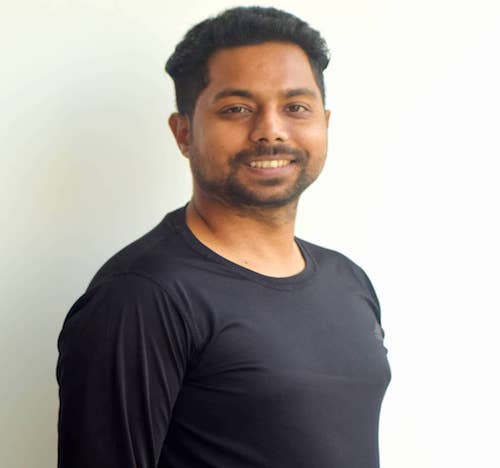
Uttam Ghosh – Founder
Hatha Yoga, Meditation & Pranayama Teacher
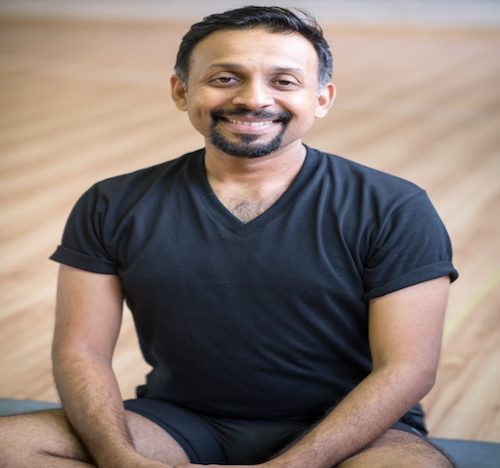
Acharya Shri Parveen Nair
Non-dual Philosophy and Embodied Yoga
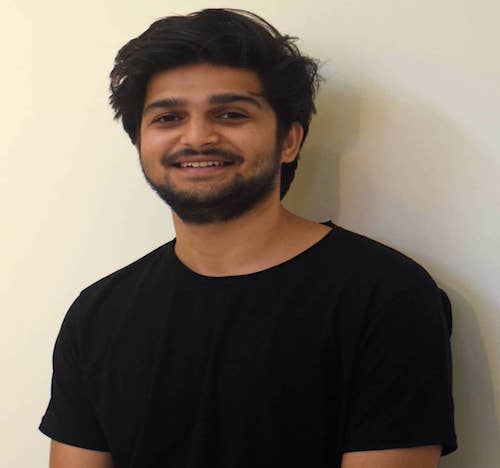
Ritesh Bhatt
Yoga Anatomy & Adjustment Alignment

Louis (Ramana)
Iyengar Yoga - Yoga Anatomy and Physiology
Additional Activities & Excursions
Activities
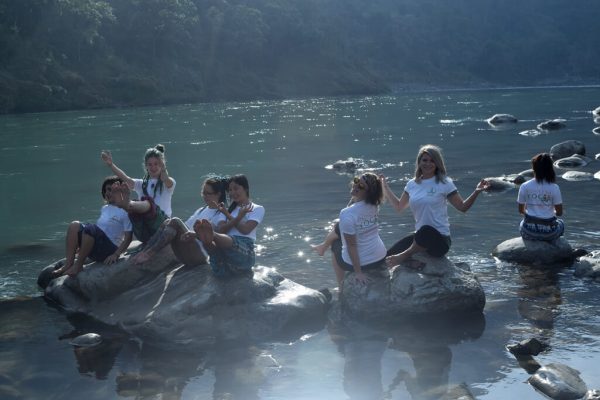
The FUN Fact! Get ready for a refreshing holy dip in the Ganges. We will take you down to the beaches of holy River Ganga for outdoor meditation and holy dip
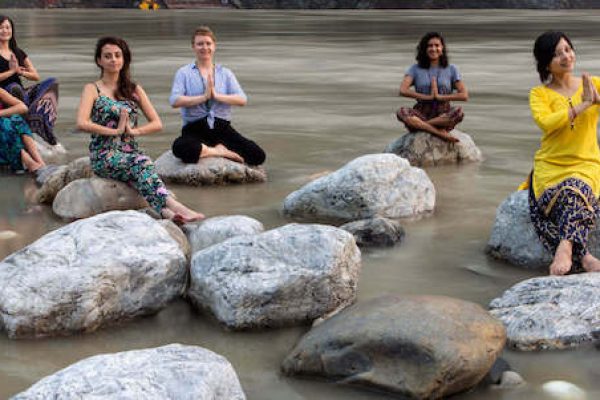
Walk to the Holy Ganges for Outdoor Meditation and much more to experience.
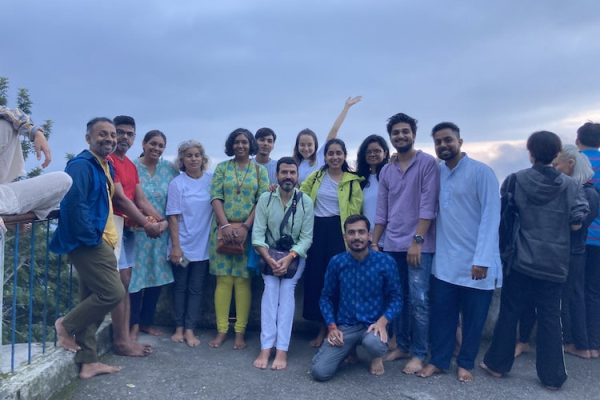
Engage yourself with guided excursions to sites of historical and yogic significance in the town (Rishikesh walks!)
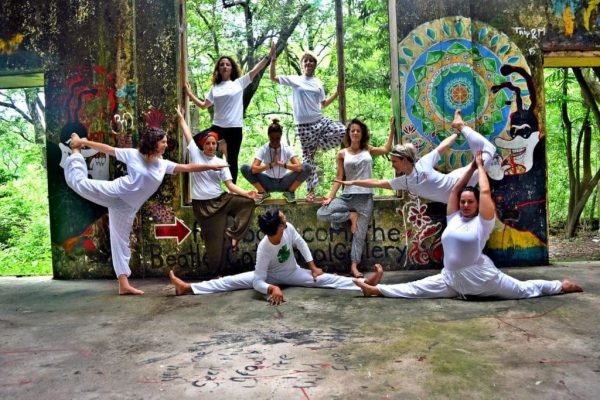
Caves! Visiting ancient meditation cave to experience its uplifting vibes!
Accommodation & Food
